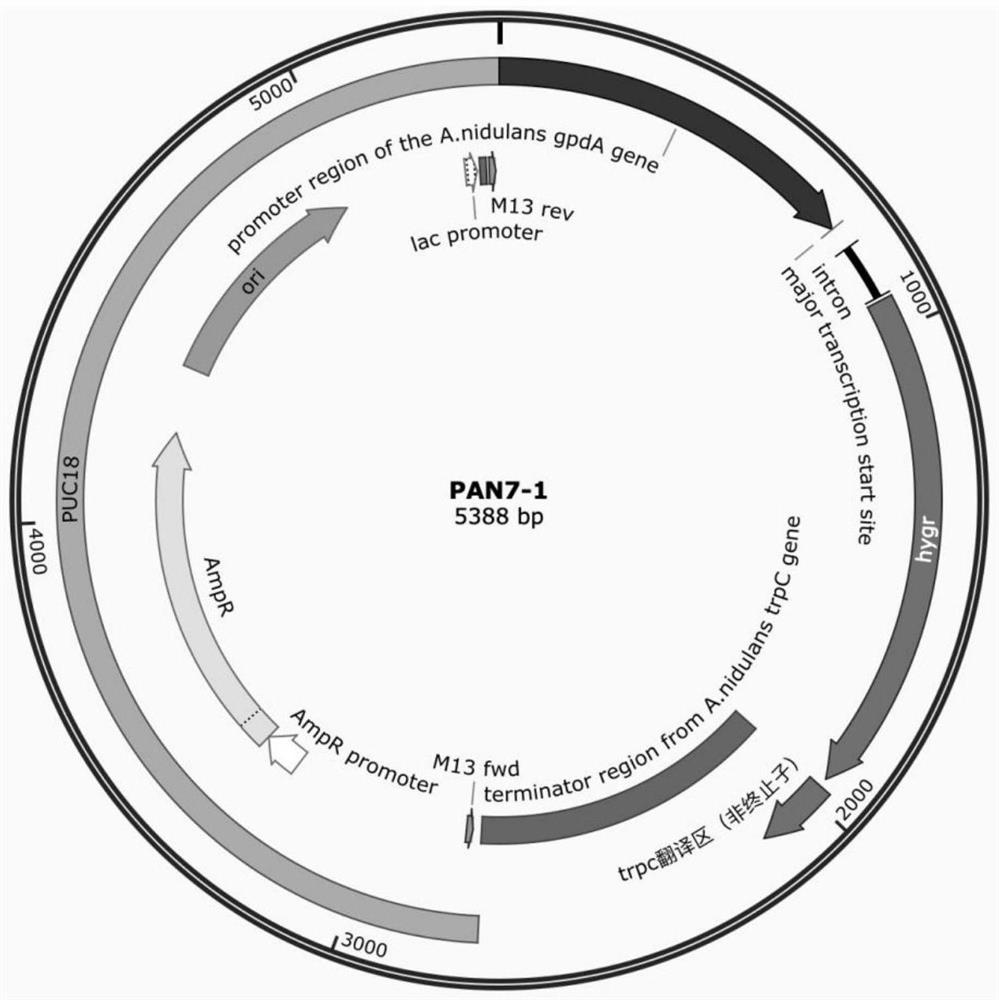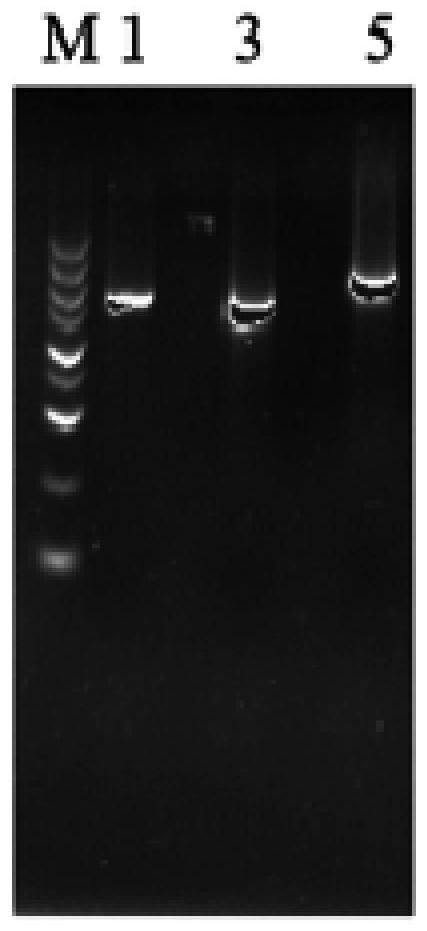A strain of Aspergillus niger genetic engineering bacteria and its construction method and application
A technology of genetically engineered bacteria, Aspergillus niger, applied in the field of genetic engineering, can solve the problems of low citric acid production and long fermentation cycle
- Summary
- Abstract
- Description
- Claims
- Application Information
AI Technical Summary
Problems solved by technology
Method used
Image
Examples
Embodiment 1
[0037] Example 1 Construction of Aspergillus niger glucan synthesis regulatory gene VosA knockout bacteria
[0038] (1) Extraction of the original Aspergillus niger genome
[0039] The plant genome extraction kit (takara minibest plant genomicDNAextraction kit) was used by takara company, and the specific method was as follows:
[0040]1. Take 1 mL of the scraped Aspergillus niger spore liquid and inoculate it in 50 mL DP medium, and cultivate it at 35 °C and 200 r / min for 24 hours; the formula of the DP medium is as follows: 10 g / L dextrin, 5 g / L peptone, 2.5g / L Potassium Dihydrogen Phosphate, 1g / L Sodium Nitrate, 0.5g / L Magnesium Sulfate, 10g / L Glycine, dilute to 100mL with water and then divide into 50mL. ;
[0041] 2. Centrifuge at 8000r / min for 5min to collect mycelial balls, wash them twice with normal saline, grind the collected mycelial balls with liquid nitrogen for 3 times, weigh 100mg of the ground powder and add it to 500μL of Buffer HS II in advance Mix well in...
Embodiment 2
[0072] Embodiment 2 crystal violet dyeing experiment
[0073] Inoculate the original Aspergillus niger (Aspergillus Niger ATCC 12846) and the genetically engineered bacteria on the PDA plate respectively, wait until the spores are overgrown, add 3mL of spore scraping buffer to the plate, scrape off the spores with a coating rod, and transfer to a sterile 5mL In a centrifuge tube, dilute to 2 mL with spore scraping buffer to obtain spore liquid. Quantify with a hemocytometer and dilute to 10 6 cells / mL, then continue to dilute to 10 5 / mL, 10 4 / mL.
[0074] Add 1 mL of synthetic medium in advance to the 24-well plate, and then inoculate 2 μL of different concentrations of spore liquid into the medium. Cultivate statically at 35°C for 36 hours to allow Aspergillus niger to form a film at the bottom of the orifice plate. Afterwards, the culture medium was discarded, washed twice with PBS, and stained with 0.1% crystal violet for 15 minutes. Afterwards, the crystal violet w...
Embodiment 3
[0080] Embodiment 3 Genetic Engineering Bacteria Immobilization Fermentation Experiment
[0081] 1. Preparation of Porous Fibrous Material Immobilization Medium
[0082] Soak the porous fiber material (pore size 1 mm) in absolute ethanol for 1 h, then rinse with water until there is no obvious smell of ethanol, and dry it in an oven at 65°C to constant weight. cut into 0.5cm 3 Carriers of the same size left and right.
[0083] 2. Preparation of Fermentation Medium
[0084] Weigh 250g / L corn flour and place it in a 75°C water bath. When the corn flour liquid reaches 65°C, add 1mL of liquefying enzyme (60000U / L) to liquefy for 40min, then heat the water bath to 95°C, and wait for the corn flour liquid to reach 65°C. When the temperature reaches 85°C, add 1mL of liquefying enzyme and liquefy for 60 minutes until the iodine solution does not turn blue. Filter the corn flour liquid to obtain the corn flour clear liquid, and add unfiltered corn flour liquid as the feedstock [unfi...
PUM
 Login to View More
Login to View More Abstract
Description
Claims
Application Information
 Login to View More
Login to View More - R&D Engineer
- R&D Manager
- IP Professional
- Industry Leading Data Capabilities
- Powerful AI technology
- Patent DNA Extraction
Browse by: Latest US Patents, China's latest patents, Technical Efficacy Thesaurus, Application Domain, Technology Topic, Popular Technical Reports.
© 2024 PatSnap. All rights reserved.Legal|Privacy policy|Modern Slavery Act Transparency Statement|Sitemap|About US| Contact US: help@patsnap.com










